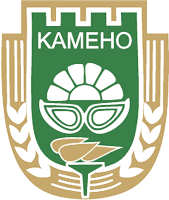Agatopol - Ahtopol
Ahtopol is the southernmost Bulgarian Black Sea town. It was inhabited from the 5th century BC. From this time, and from the following centuries, excavations have uncovered many Thracian and Greek bronze and silver coins, as well as ceramic vessels, statuettes and many other finds. Stone anchors from this period have also been discovered along the coast. Several amphorae from the early Roman era (from the 1st century BC to 1st century AD), have also been discovered which is testifying to serious trade since that time. Later, the city flourished, as evidenced by several votive tablets of the Thracian horseman, found in the city, which indicate the presence of a temple or sanctuary.There are suggestions that in the IV century Agatopol was fortified with a fortress wall. Later, at the beginning of the 6th century, the whole Ahtopol peninsula was surrounded by a new wall. It was 2.8 meters wide, built of mortar stones and brick belts. Life in the city did not stop in the early Middle Ages. In the 10th century Agatopol was already a bishopric, and after 1201 it was finally conquered within the borders of the Bulgarian state. It was then that the city, like other Black Sea cities, experienced a strong economic boom. In 1263 it was conquered by Byzantium, but in 1304 it was again within the borders of the Bulgarian kingdom.
Agathopolis was an important trading point through which goods passed for Venice and Genoa, as well as for Constantinople and Greece. It was at this time that many animals were exported from Agatopol - sheep and goats, which fed the Byzantine capital.
In the first half of the 15th century the town maintained its good economic condition. Just then, according to open Venetian archives, Venetian merchants carried out their economic operations mainly with Agatopol, compared to other Western Black Sea ports.
After 1453, Agatopolis became permanently part of the Ottoman Empire.
Immediately around Ahtopol there are numerous Thracian tombs. In one of them, in the village of Sinemorets, an extremely rich gold treasure was found - earrings, necklace, ring, etc., which belonged to a noble Thracian aristocrat buried here. Next to this mound there is an old Thracian fortress. During excavations, another large treasure of nearly 200 silver tetradrachms was found in it. This shows that Atopol and the area around it was an important center of the Thracians in the period II-I century BC.


